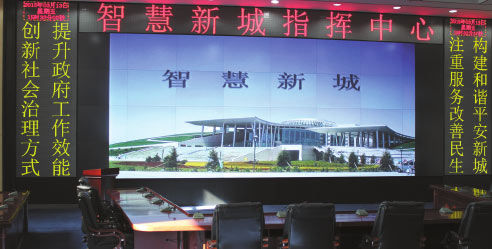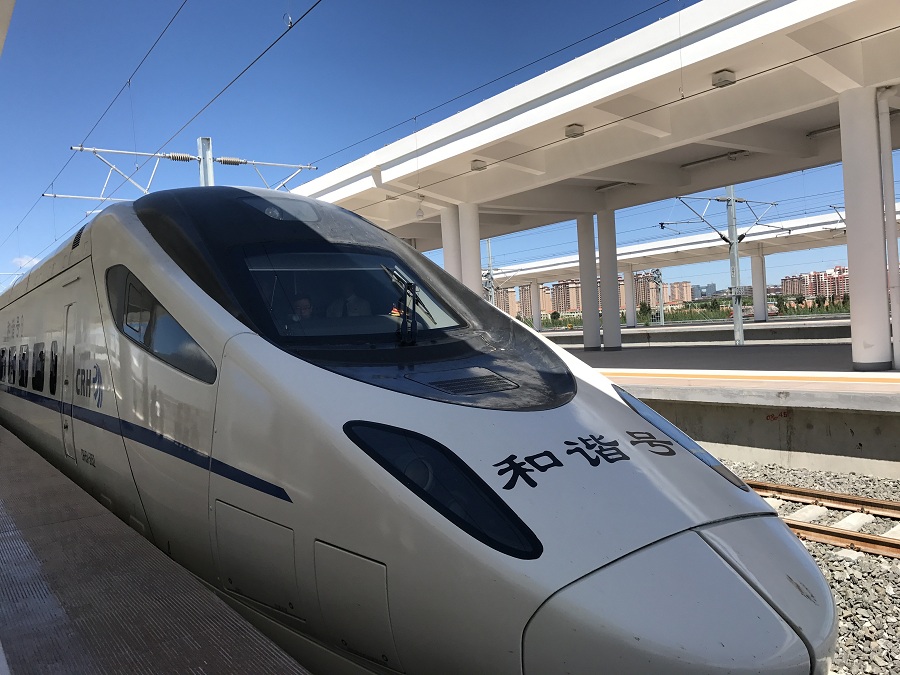Scenic Hohhot wants to be smart based on emerging industries
By HAO NAN/YUAN HUI (China Daily)
Updated: 2015-03-28
 |
|
Hohhot strives to be "smart" in meeting demands for public service and social management. WANG XING/CHINA DAILY |
Hohhot is famous for its charming scenery of endless grasslands and blue skies.
But it is no longer satisfied with the label of beautiful. It also wants to be smart.
The capital of the Inner Mongolia autonomous region recently initiated a "smart city" project based on emerging technologies such as big data, mobile Internet, the Internet of Things and cloud computing.
The project is scheduled to be finished in 2017 with a total governmental investment of 2.4 billion yuan ($387.2 million).
It aims to make smart responses to various demands for public services, social management, industry operations and other activities, local officials say.
The project will focus on the construction of intelligent infrastructure for transportation, communities, medical health care, education, energy conservation and environmental protection.
With the financial support and preferential policies on tax, rent and human resources, the city government has gathered a group of software and new energy companies to participate in the forward-looking plan, including Future International, Qingdao New Energy Solutions and Taiji Computer.
They will provide integrated solutions to build a smart city using expertise in their industries. Inspur, a leading solution and service provider for cloud computing, set up a cooperative relationship with the city government in 2013.
According to the agreement, the company registered a wholly owned Hohhot subsidiary to invest a large mount of money over three to five years for the construction of a cloud computing center, a related R&D base and an exhibition center.
Wang Kaiyu, an expert at the AnHui Academy of Social Sciences, said the smart city project would have more development potential in second-and third-tier cities in China than in large cities such as Beijing, Guangzhou and Shanghai. His opinion was supported by Inspur's decision to locate cloud computing centers in cities such as Hohhot, Jinan, Lanzhou, Hefei, Kunming and Mianyang. "Hohhot will provide excellent services as well as good investment and business environment to attract more IT companies to built an important cloud computing industrial base nationwide," said Nasanmunkh, Party chief of the city. In addition, the e-commerce industry is also taking off in the city.
Last year, Hohhot was listed as a national e-commerce demonstration city, said Guo Chenggang, director of the municipal bureau of commerce.
The city is now focusing the development of larger local e-commerce companies.
Official statistics show that Hohhot has 1,381 e-commerce companies, 109 of them engaging in services. Sales revenue in the industry amounted totaled 32 billion yuan, accounting for 13 percent of the city's GDP.
Guo said the city government will also upgrade the industrial chain to integrate technology, logistics, payment, verification and data services.
Also, it will continue to promote the integration of existing industries such as dairy production, modern agriculture, animal husbandry and tourism, he said.

High-speed train debuts in Inner Mongolia
A bullet train departed Hohhot East Railway Station for Ulanqab marking the start of high-speed rail services using Inner Mongolia’s first newly-laid high-speed railway on Aug 3.
